Container gardens are a simple way to add beauty to your outdoor spaces. You can enjoy containers where you have no ground to plant in (like a porch, patio, deck, or balcony). Because containers are also easy to change out or move around, you can easily customize. Or, get a fresh look any time you want.
Need inspiration? Check out our ideas below!
Shown above: Containers do not need to be elaborate to be impactful. Here, a pair of pots adds interest by creating different visual heights. The lower container holds shade-loving Raspberry Splash Lungwort; the taller holds Rainforest Sunrise Hosta and Tassel Fern.
3 Beautiful Containers Pollinators Will Love
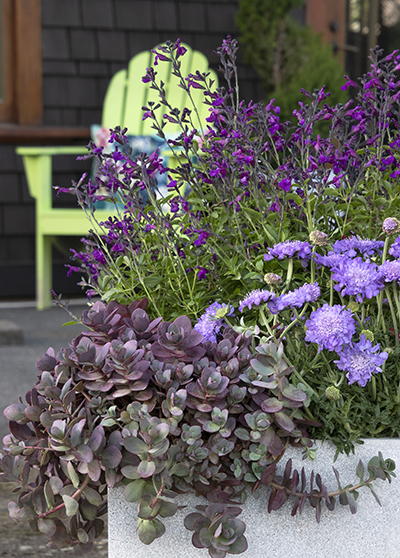
Pollinators appreciate plants in containers as much as they do plants in the landscape. Combine long-blooming varieties for a nonstop show through the seasons. Vibe® Ignition Purple Salvia attracts butterflies and hummingbirds from spring to autumn. Giga™ Blue Pincushion Flowers brings bees and butterflies all summer and into fall. That’s when SunSparkler® Firecracker Sedum bursts into bloom, offering a final buffet of pollen and nectar.
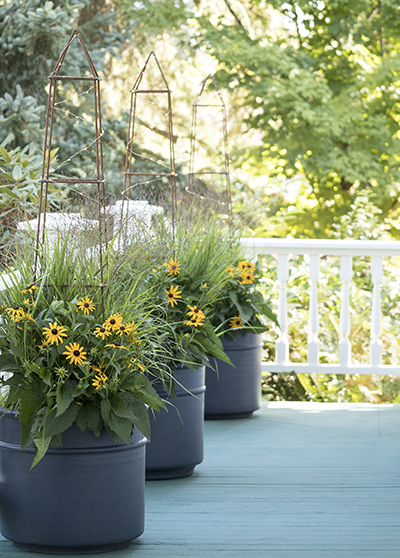
Goldsturm Black-Eyed Susan is a tried-and-true pollinator favorite. It shows off a large number of flowers from late summer into autumn. If left to dry, the flowers produce seed pods that songbirds such as finches feed from over the winter. Paired with a low-maintenance ornamental grass, such as Shenandoah Switch Grass. This creates a container garden that adds beauty through the end of the growing season.
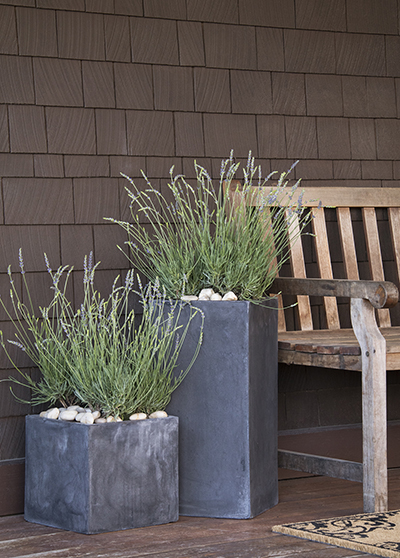
There are many reasons to love Lavender — including its appeal to bees, butterflies, and hummingbirds. Phenomenal French Lavender, like other varieties, produces a profusion of fragrant flowers. They add beauty to containers by themselves or paired with other plants. Here, we upped the interest level by planting them in containers that play off their gray-green color. Yet contrast their soft, rounded shape.
3 Beautiful Containers for Shaded Places
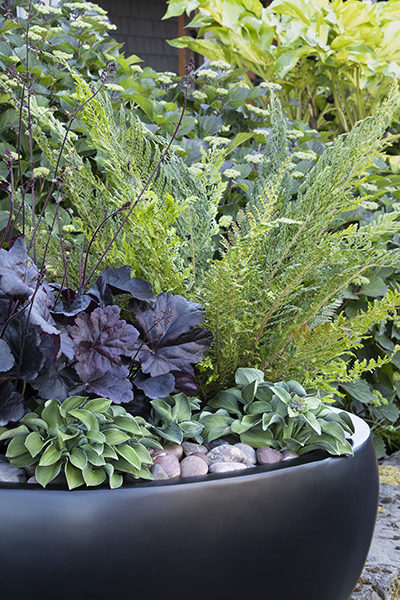
Hostas and Ferns are a natural pairing thanks to their contrasting textures. Dyce’s Holly Fern draws the eye up while adding a lacy look to containers and gardens. Paired with a miniature Hosta (in this case Blue Mouse Ears Hosta) the combination is both classic and fresh. Obsidian Heuchera adds a splash of deep, rich colors that also complements the container.
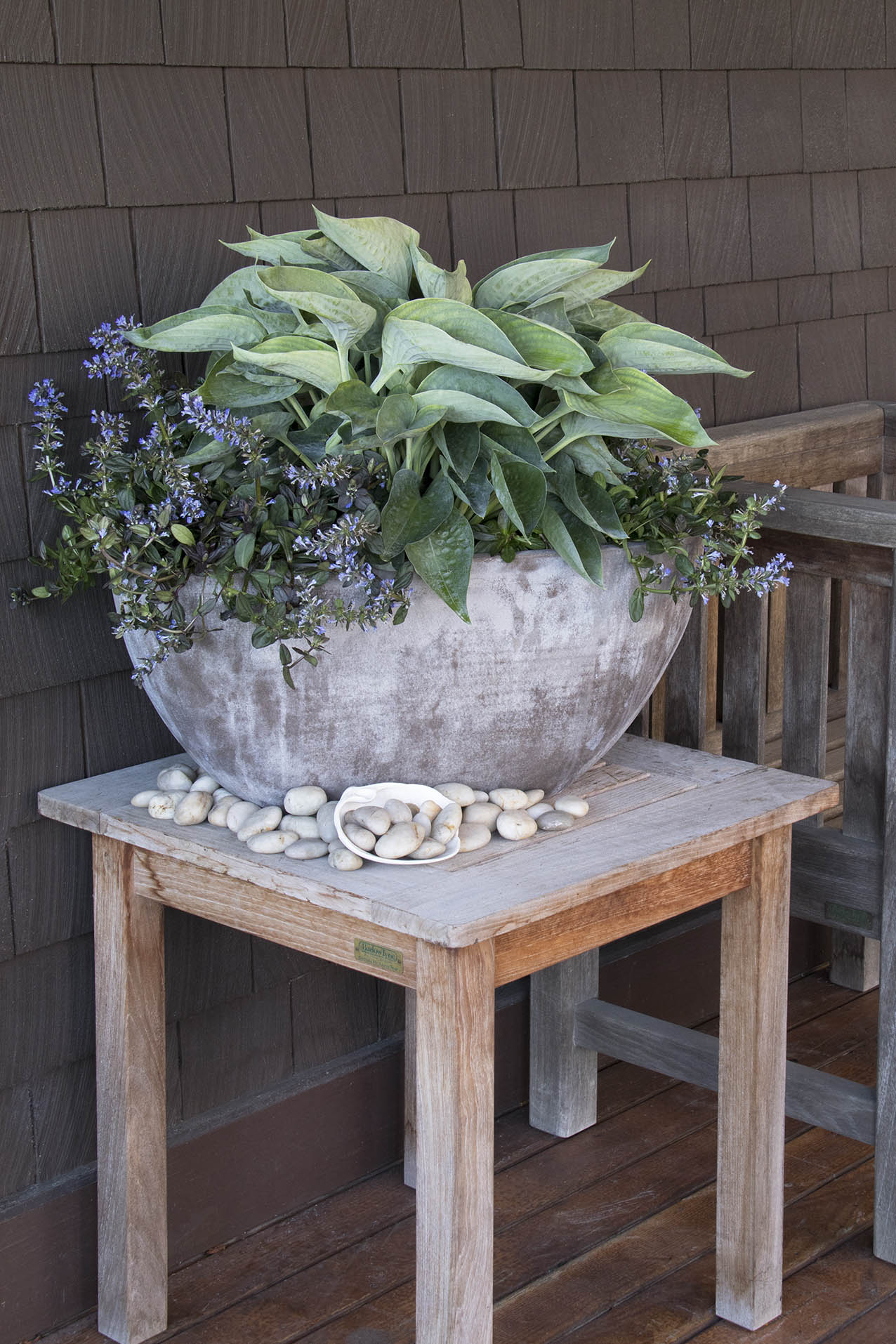
You can create a lush, interesting container without flowers. Here, we put together Chocolate Chip Ajuga with Abiqua Drinking Gourd Hosta. The Ajuga delights from spring to fall. Its finely textured, purple-flushed foliage contrasts the silvery-blue Hosta leaves. At the start of the season, Ajuga’s copious spikes of violet-blue flowers add interest. Later in summer, Hosta adds vertical interest with its flower spikes.
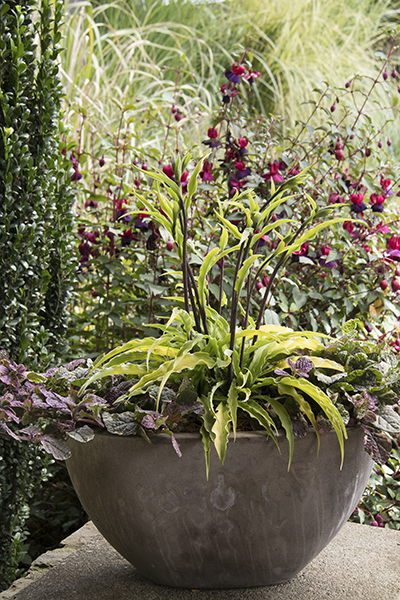
Playing off contrasts — differences in form, color, or texture — is one of the best tools in a garden designer’s playbook. This container shows that off beautifully. Burgundy Glow Ajuga contrasts in almost every way with Curly Fries Hosta — in shape, color, and texture. The result is a tabletop design that has a modern, contemporary look that is sure to wow your friends.
3 Containers for Structure
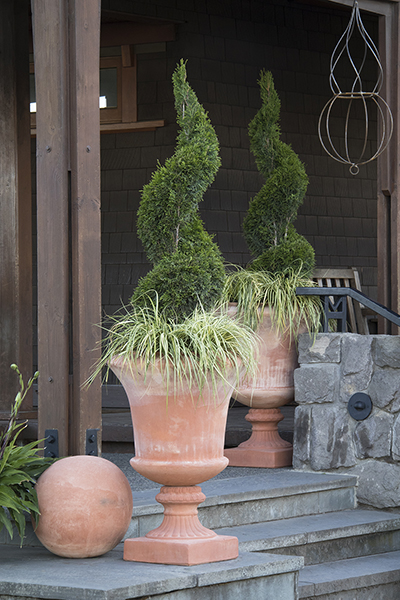
Add beauty and excitement to your containers by using plants that create a sense of motion. Here, for example, Emerald Green Arborvitae pruned as a dramatic spiral topiary draws the eye upward. While Variegated Japanese Sedge offers a frothy look below with its gracefully arching blades. Its creamy-yellow variegation creates a color contrast, too.
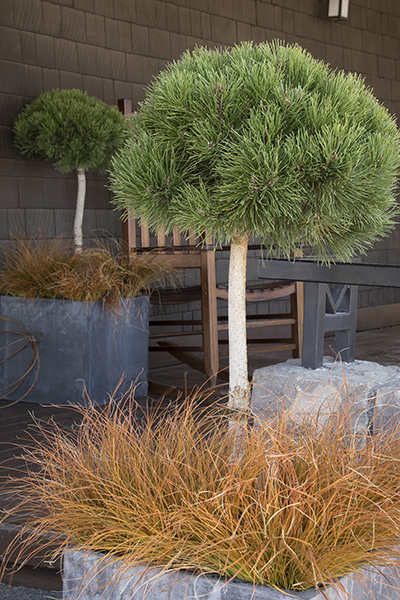
A feature of standards (patio trees) is that the clean trunk allows you to plant something interesting beneath these shrubs. Here, we accented Dwarf Mugo Pine with Orange New Zealand Sedge. The Sedge both complements the texture of the Pine and contrasts it in color. Thus creating a simple, beautiful look you can enjoy all year.
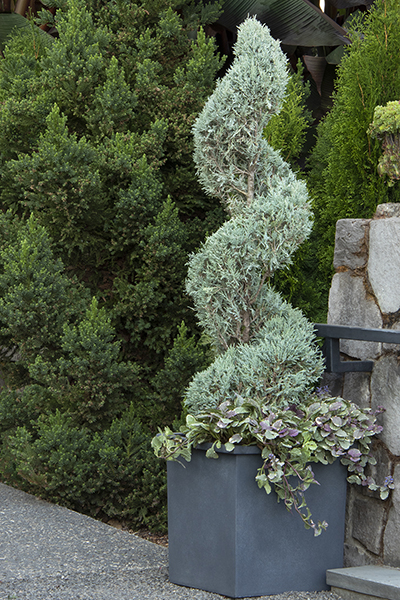
Topiary adds a distinctive beauty to containers with its structural form. A natural contrast to lush flowers, evergreen topiary like Medora Juniper. This is ideal for adding either a formal or whimsical look to your spaces. Accent its silvery-blue cast with a low-growing underplanting like Burgundy Glow Ajuga or Elijah Blue Fescue, or Angel Wings® Senecio.
Container Gardening Tips
Tips to Keep Your Container Gardens Beautiful
Want to keep your containers looking the best on your block? Use these pointers!
- Keep up with watering. Plants in pots cannot send their roots deeper into the soil in search of moisture. Regular watering — especially in summer heat — is key. A lush pot full of plants may need daily watering.
- Use a high-quality potting mix. When putting together your container creations, use a mix designed for use in containers. Garden soil typically does not drain well.
- Add fertilizer. Incorporating time-release fertilizer in spring or when you plant your pots is an easy way to feed plants for months. These types of fertilizers slowly release nutrients into the soil over the course of weeks. They do the work for you!
Tips for Trees, Shrubs, and Perennials in Planters
While we typically think of annuals for container gardens, perennials, trees, and shrubs also add beauty.
- To get a fresh look every year, pull your plants out of their pots at the end of the season and add them to your landscape. You can get years of beauty from them.
- If you want to overwinter your plants in their pots outdoors, select varieties that withstand temperatures about 20 degrees colder than your region’s average winter low temperature. This helps account for the loss of insulation the soil provides.
- In colder areas, provide extra insulation by moving containers to a sheltered spot, such as a garage or storage shed.
- Perennials left in containers may need to be divided every couple of years. This keeps them from becoming rootbound and less beautiful.





Please login to comment.
Don't have an account?
Sign Up for free